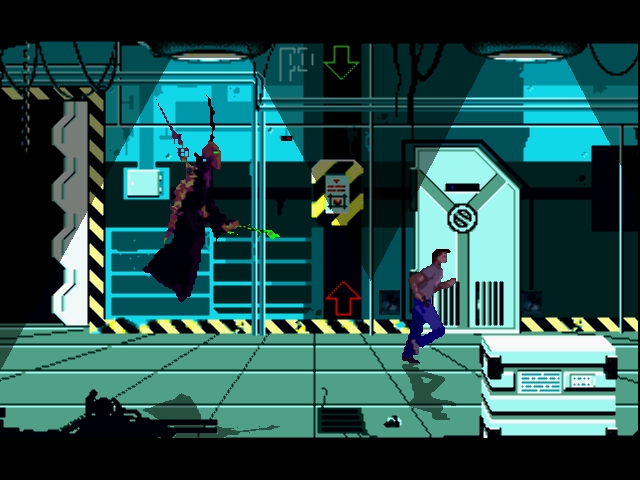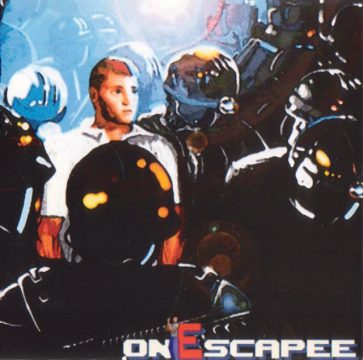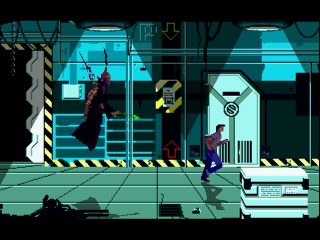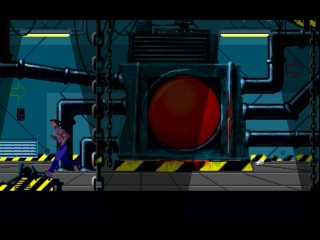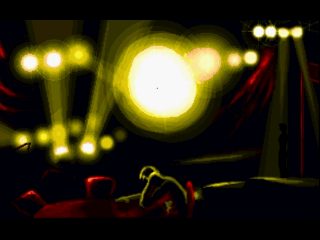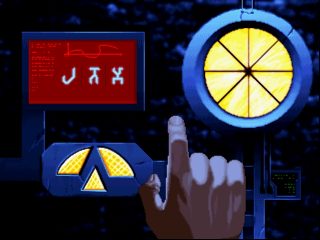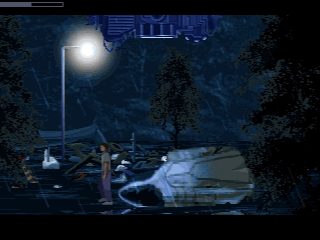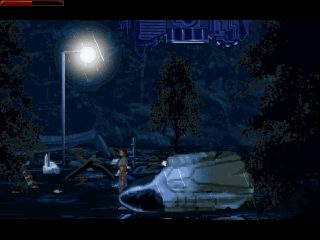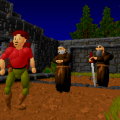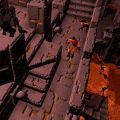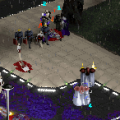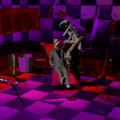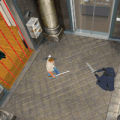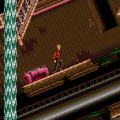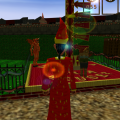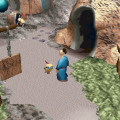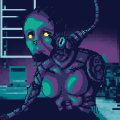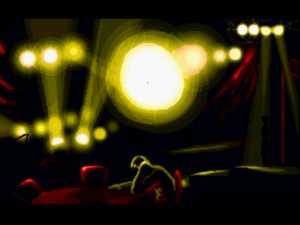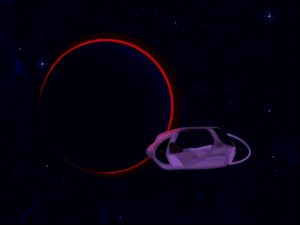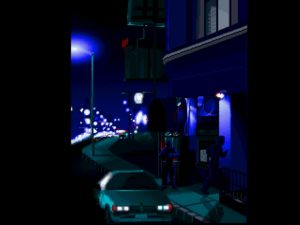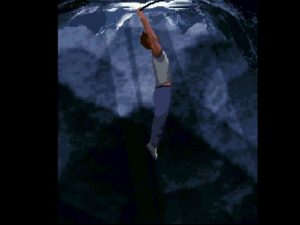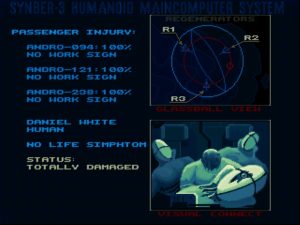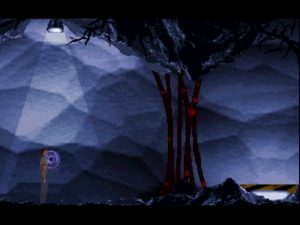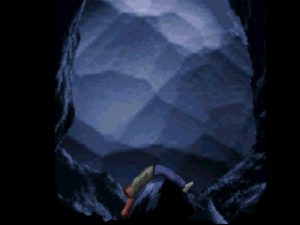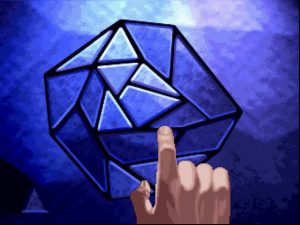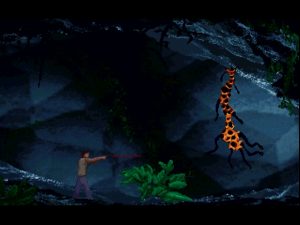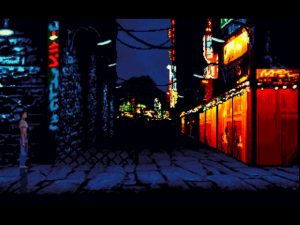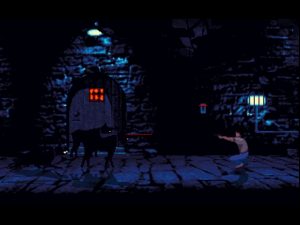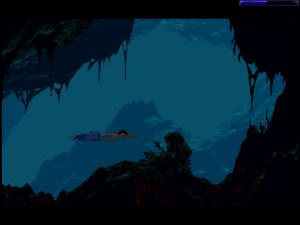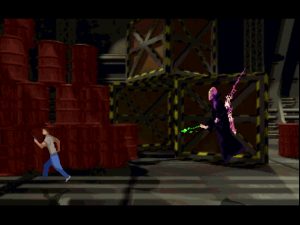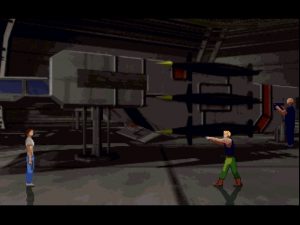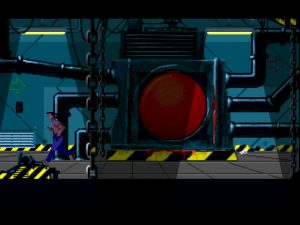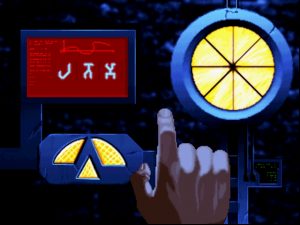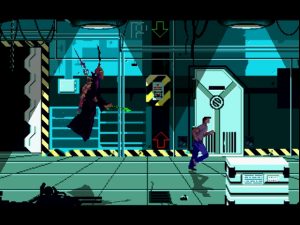1997 was not exactly a good year to be releasing Amiga games. Commodore has long since gone under, Escom, their successor, crashed in 1996 after several years of very questionable policies, and whatever was left over was snatched primarily by Gateway. The two most common Amiga models owned, the ones you had to target if you wanted to sell anything, were either the ancient OCS/68000 Amiga 500, or the very old (1992!) AGA/68EC020 Amiga 1200. There were many third party upgrades available, attempting to bring Amiga on par with the exploding Windows PC market, but they were getting very expensive.
Enter the today’s subject. A creation of an Hungarian company called Invictus Team and their first released project, onEscapee came on a whole CD-ROM, and in addition to a stunning 2x speed CD drive it required Amiga 1200 or better, with four megabytes of RAM and a hard drive of its own. While it might seem like a lot, if you bought an Amiga CD-ROM drive the odds were you already had a robust HD and plenty of memory anyway, the kind of setup that could probably handle AmigaQuake (or Gloom, at the very least). Still, the hefty requirements could very well raise an eyebrow or two because onEscapee at its core is “just” a 2D game. More specifically, it belongs to the select few games that are not only inspired by the timeless classic known as Another World, but attempt to emulate its formula directly.
Even more so than with Flashback or Heart of the Alien, the former somewhat ironically ingrained in the collective consciousness as the sequel to Another World, one can’t help but notice the mounting similarities. The long and impressive cinematic opening wherein the young protagonist is transported to a hostile and alien world, the wordless gameplay with plenty of short animated cutscenes, the weird and lethal wildlife in the starting, the blaster style gun (with a particle effect shield option!) – the list goes on.
It’s not all bad however, and after all Another World is one hell of a game to draw inspirations from. onEscapee‘s strongest point, apart from its audiovisuals – more on that later – is its mood and atmosphere, also very much inspired by Chahi’s masterpiece. From the very beginning the game world feels hostile and oppressive, amplifying feelings of being a lone escapee. Each area has its own distinct mood that adds to the whole, but there’s also the overarching theme of decay and hopelessness. The scrapyard is barely functioning, the alien facility is full of broken down androids and damaged sections, there’s barely anyone alive out there. It’s really easy to overdo the grim and the dark, but people at Invictus somehow managed to find that sweet spot where things may be dark, but not so dark that you simply give up and stop playing.
This is good because the actual gameplay is less than stellar. There is a lot of inertia or input lag making precise run and jump sequences difficult. Firefights drag on forever and are reduced to spamming attack and shield until everything is dead. There are several reasons for that but the most important is probably the presence of an actual health bar on both sides – the protagonist can tank a good deal of shots but so can the enemies and there’s no real way to gauge if your shots are doing any serious damage other than an occasional robotic flinch. Furthermore, because of the health bar the traps omnipresent in the facility part of the game are incredibly frustrating, ruining the pacing and requiring near pixel perfect timing. Sure enough, there are healing stations placed every few screens and you can save at any time, but both these factors only seem to make the problem worse since you can easily save in a spot where you don’t have enough health to proceed and don’t have enough to return to the nearest healing station either, ruining your run. Finally, the puzzles usually involve searching for code sequences to input at the next locked door, but the solutions are placed in increasingly obscure places. This is especially bad in the city, where the actual final piece of the puzzle is near impossible to find unless you already know it’s there. The developers seemed to be aware of this to some degree because the supplied manual (in the novel html format!) had a rather extensive hint/walkthrough section.
At the very least, the game does deliver on its promise of stunning graphics. Most of it is hand drawn with an occasional non-intrusive early CG rendering in the background, displaying consistent color palette and art direction. The main character is very well animated at 18/25 frames per second depending on your rig, though the opponents aren’t as detailed or thought-out, some being frankly bizarre. Also, the only thing the graphic artist couldn’t do well is the faces. This is most obvious with the protagonist, who looks slightly different in every closeup, but present elsewhere as well. The music is incredibly good, proudly showing off CD-Audio capabilities with a variety of tracks, some aggressive and electronic, others slow and majestic, depending on the location.
All in all, onEscapee is a rather polarizing game. Its gameplay part is relatively poorly though-out and left plenty of people frustrated and turned off. However, its main strength lies in its powerful audiovisuals and its haunting mood that allow it to stand out in the (sparse) crowd of cinematic platformers.
After its release, Invictus moved on to PC, where they had a decent track record with racing games. They hadn’t forgotten their first title thuogh, and in 2004 released a freeware Windows port of onEscapee on their website. This port is virtually identical to the Amiga version, save some very minor touches here and there like a redrawn health bar. Another port for iOS and Android devices, titled “The Escapee” followed in 2012, though around the time of its release the free PC port download link was taken offline, possibly due to general website renovations. At least it’s still available on third party hosting websites.
Links:
The Escapee at Invictus, the android/iOS port
Comparison Screenshots
